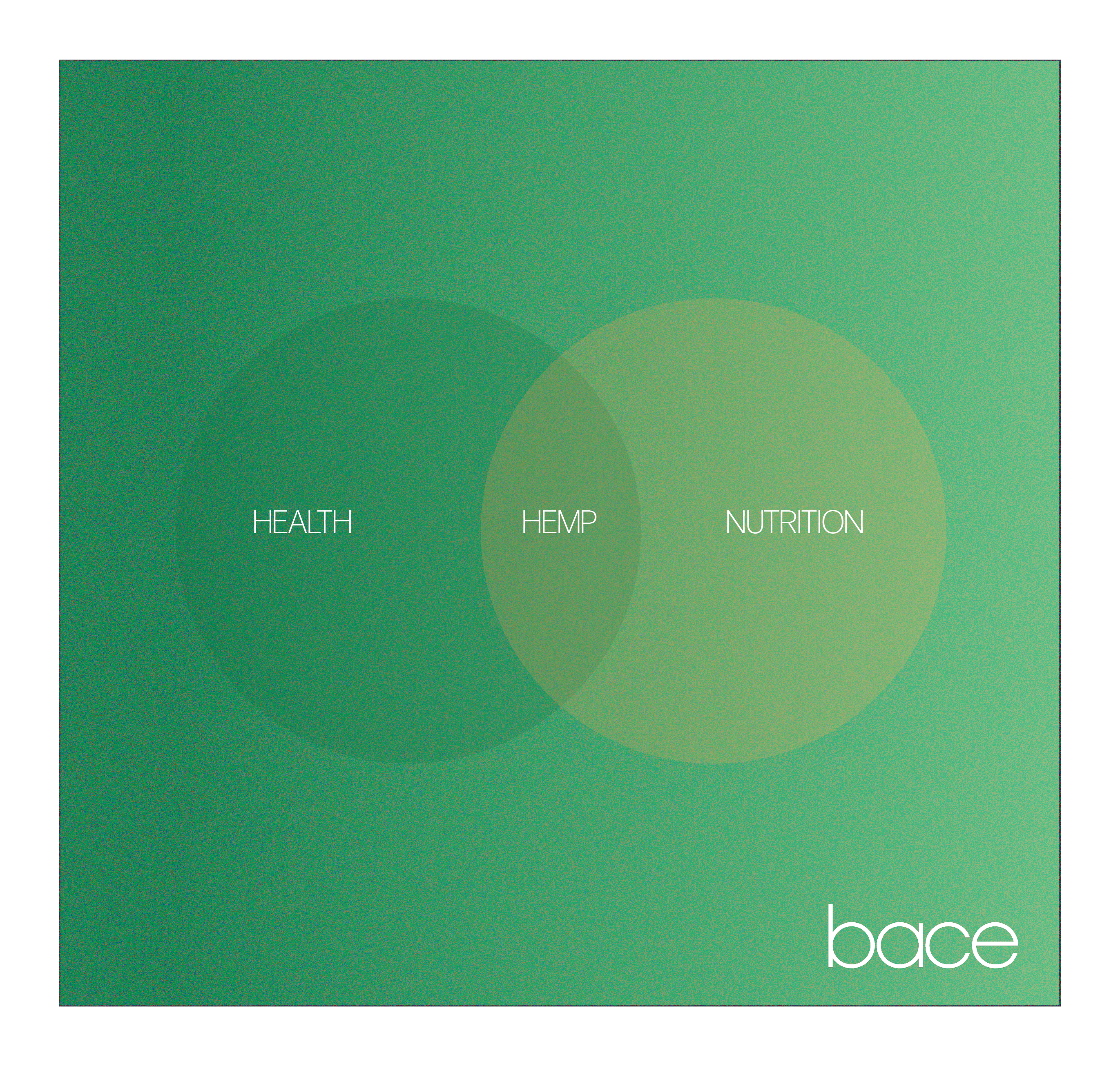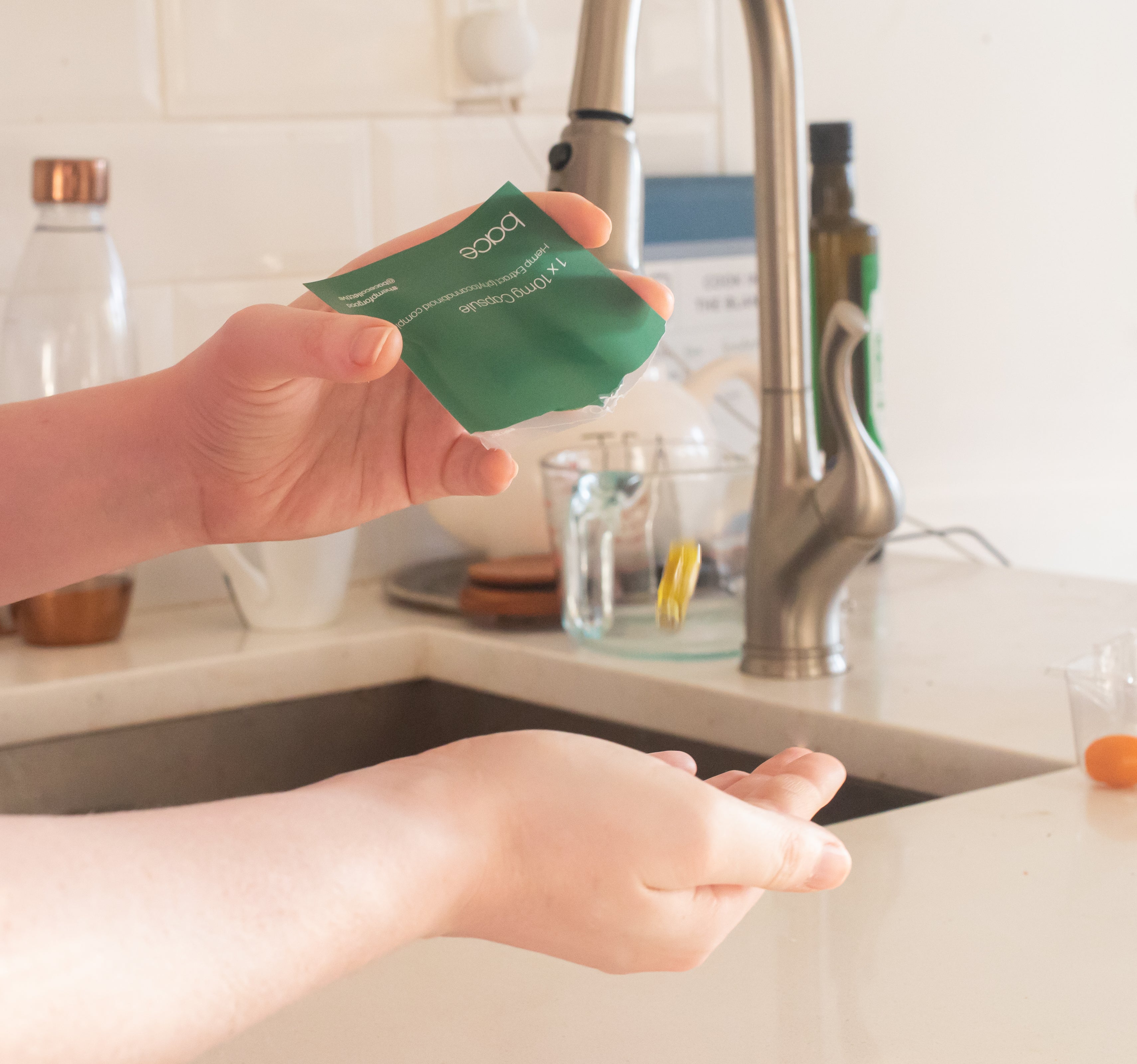What are the benefits of hemp oil?
Hemp oil is a popular nutritional supplement, but some people are hesitant to incorporate it into their daily routines. Outside of the stigma of Cannabis sativa plants, many still wonder: how can hemp oil benefit my overall health?
The answer to this question depends on one’s definition of hemp oil and, well, science.
To start, the term “hemp oil” represents three hemp products: Cannabidiol (CBD) oil, hemp seed oil, and hemp extract. When we talk about hemp oil, we are explicitly citing hemp extract–– which is the chief proponent of CBD oil.
Since hemp seed oil provides a different, but equally important, range of health benefits, we will address both hemp products to get you started.
Secondly, cannabis research is relatively new, so there’s a lack of direct evidence involving the benefits of terpenes, flavonoids, or the legendary “entourage effect” (don’t worry, we will address these topics!)
To understand hemp’s potential value and its known health benefits, let’s review:
- The established medicinal properties of hemp oils
- Cannabinoids, the entourage effect, and hemp seed nutrients
- Common marketing myths of hemp oil
Established medical properties of hemp oil
As of 2020, medical research supports the use of hemp extract and hemp seed oil for the following conditions:
- Anxiety
- Preventative memory loss
- Epilepsy
- Insomnia
- Cardiovascular diseases
- Chronic pain
- Arthritis
- Immune system deficiencies
- Indigestion
- Acne
- Psoriasis
- Eczema
- Hair health
Anyone who sees this list of medical ailments might believe that hemp is a “magical plant” with all the right answers, but it’s crucial to recognize common denominators: cannabinoids and nutrients.
What are cannabinoids?
Cannabinoids are the active compounds of hemp plants (Cannabis sativa L.). There are over 140 different cannabinoids found in Cannabis plants, but researchers have only studied a handful.
The most abundant and well-studied cannabinoids include:
- Cannabidiol (CBD): Non-psychoactive; treats epilepsy, anxiety, pain relief, inflammation, and insomnia.
- Cannabichromene (CBC): Non-psychoactive; treats inflammation, bacterial and fungal infections.
- Cannabigerol (CBG): Non-psychoactive; potentially treats neuroinflammation and oxidative stress.
- Tetrahydrocannabinol (THC): Psychoactive; treats loss of appetite associated with AIDS and chemotherapy, symptoms of multiple sclerosis, and improves mood and cognition.
- Cannabidivarin (CBDV): Non-psychoactive; treats convulsive disorders and neurodegeneration.
How do cannabinoids work?
Each cannabinoid is responsible for different bodily responses because they interact with our endocannabinoid system. For instance, THC and CBD interact with CB1 and CB2 receptors, which are endogenous cannabinoid receptors found throughout the central nervous system and body tissues of many animals and humans.
In plain speech–– our bodies have a system of molecules called “endogenous cannabinoid receptor ligands” (aka endocannabinoids) which then respond to hemp cannabinoids (phytocannabinoids). There are four types of endocannabinoids, as well:
- Anandamide (N-arachidonoyl-ethanolamide)
- 2AG (arachidonoyl glycerol ether)
- NADA (N-arachidonoyl dopamine)
- Virodhamine (O-arachidonoyl-ethanolamine)
It’s important to understand endocannabinoids because they may explain why people respond to phytocannabinoids differently. For instance, some people experience THC as a relaxing molecule, while others find THC to induce paranoia, anxiety, or even hallucinations.
Remember how CB1 and CB2 receptors respond to THC and CBD? As it turns out, Virodhamine inhibits CB1 receptors to block the interaction of THC. Meanwhile, Anandamide, 2AG, and NADA all stimulate THC-binding receptors.
Cannabinoids target certain receptors for specific effects
Want to really blow your mind? The location of our endocannabinoid receptors determines a phytocannabinoids physical interaction. As it stands, our endocannabinoid receptors consist of:
- CB1
- CB2
- G Protein-coupled receptors: GPR55, GPR18, GPR119
- Transient receptor potential ion channels: TRPV1, TRPV2, TRPA1, TRPM8
- “Peroxisome Proliferator-Activated Receptors” nuclear receptors: PPAR
*Ion channels and nuclear receptors only respond to synthetic cannabinoids.
CB1 receptors are located throughout the central nervous system (brain, spinal cord, spinal cord ganglia) and the enteric nervous system (on the cells of fat, endothelial cells, liver, and gastrointestinal tract). So, it makes sense that THC can produce symptoms like:
- Loss of balance
- Fatigue/drowsiness
- Increased appetite
- Unwarranted optimism or laughter
- General confusion
CB2 receptors are found on the surface of immune cells. They are especially active on activated glial cells in areas of nerve damage, where one might experience tingling, muscle weakness, and numbness. CBD interacts with CB2 receptors, so it’s no wonder that we take CBD to treat pain, inflammation, anxiety, seizures, or high blood pressure.
How we respond to phytocannabinoids like CBD and THC also makes sense when you consider how endocannabinoids target specific classes of neurotransmitter receptors, such as:
- Opioid neuropeptide system: Receptor gene families and peptides that bind or regulate opiate receptors in the central nervous system.
- Serotonin: Neurotransmitters that regulate mood, the digestive system, and vascular homeostasis.
- Dopamine: Neurotransmitters involved with body movement regulation, hormone regulation, and feelings of reward, motivation, attention, and memory.
- Nicotinic-acetylcholinergic: Acetylcholine receptors found in muscles to control muscle contraction.
- NMDAergic receptors: Ionotropic glutamate receptor that controls synaptic plasticity and memory function.
As we can see, our endocannabinoid system has the potential to affect every aspect of daily functioning. The tricky part is finding a way to incorporate cannabinoids into our lives holistically.
Since THC provides an unpredictable range of temporary symptoms, most CBD products isolate CBD in high concentrations while omitting THC as much as possible. There’s one major drawback, though: cannabinoids work best in the presence of other cannabinoids.
Research shows that CBD is more effective for pain management when it interacts with THC, while CBD interacts with CBG as a potential treatment for neurodegeneration. Additionally, CBD interacts with CBDV to ease symptoms related to neurodegeneration, seizures, and epilepsy.
Which medications already use cannabinoids?
The following list contains FDA-approved cannabinoid treatments within the United States or Canada:
- Epidiolex: CBD-based therapy for seizures associated with Lennox-Gastaut syndrome and Dravet syndrome.
- Nabiximols (Sativex, Bediol CannGros): An oromucosal spray containing CBD, THC, and other cannabinoids, terpenes, and flavonoids to treat symptoms of multiple sclerosis (i.e., muscle stiffness, spasms, and overactive bladder). Nabiximols may also treat idiopathic pain associated with cancer.
- Dronabinol (Marinol): THC-based medication prescribed to patients undergoing AIDS treatment or chemotherapy. Dronabinol treats symptoms like AIDS-induced anorexia (loss of appetite, weight loss), nausea, and vomiting.
- Nabilone (Cesamet): a synthetic THC isolate that treats nausea and vomiting associated with chemotherapy.
The entourage effect: cannabinoids, flavonoids, and terpenes
The synergistic properties of cannabinoids have led researchers to investigate the “entourage effect,” a phenomenon thought to occur when consuming cannabinoids, terpenes, and flavonoids together. Terpenes are aromatic compounds that develop within plant leaves and trichomes, while flavonoids are plant metabolites that produce plant pigmentation.
Medical researchers have struggled to find a definite synergy between cannabinoids, flavonoids, and terpenes, but their isolated benefits are certainly noteworthy. For example, beta-caryophyllene is a promising hemp terpene because it binds to CB2 receptors (just like CBD!).
Researchers also found that limonene, another terpene found in hemp, blocks mammary and liver cancers in animals after carcinogenic exposure. A 2017 study also suggests how alpha-humulene is an active component in preventing the proliferation of cancer cells, tumor growth, and lymph node metastasis in melanoma cells.
Additional hemp terpenes include myrcene, alpha-pinene, linalool, and bisabolol–– all of which are established anti-inflammatory agents of essential oils.
Flavonoids might seem like an obscure advantage to hemp extract, but plant flavonoids are a recognized feature of maintaining a healthy diet. In fact, most health features of tea are directly correlated to the abundance of flavonoids left from the plant.
The support for flavonoid research is abundant, as many researchers are interested in their ability to eliminate free radicals. According to a 2019 study on radioprotective compounds, flavonoids provide beneficial properties such as:
- Neuroprotection
- Anti-inflammation
- Anti-bacterial
- Antioxidant
- Anti-tumor and virus
- Anti-aging
The nutritional properties of hemp oil
When products claim to provide “hemp supernutrients,” they’re referencing the nutritional properties of hemp seed oil. Hemp seed oil is different from hemp extract because it’s extracted from the hemp seed, not the aerial plant.
Hemp seeds require a different extraction process than the plant body, and they provide a varied range of compounds. Instead of producing cannabinoids, hemp seeds deliver nutritional properties such as essential fatty acids, protein, dietary fiber, vitamin E, and minerals like magnesium, zinc, iron, and calcium.
Hemp protein
Hemp seeds contain a high level of protein (25% to be exact) and deliver around 20 different amino acids. And if we look at how much protein is delivered per serving, hemp seeds produce 6.31 grams per tablespoon. That’s more than flax seeds or chia seeds combined!
The most abundant amino acids found in hemp seeds include:
- Glutamic acid (18%): Helps nerve cells.
- Arginine (12%): Aids cardiovascular health.
- Aspartic acid (11%): Regulates hormones and the nervous system.
- Leucine (7%): Regulates protein synthesis, tissue regeneration, and metabolism.
- Valine (5%): Aids muscle growth and tissue repair.
- Alanine (5%): Biosynthesizes proteins and aids the immune system, muscle function, and the central nervous system.
- Serine (5%): Essential for brain development, metabolism, and synthesizing vital cellular mechanisms throughout the body.
- Phenylalanine (5%): Molecular precursor for vital neurotransmitters, tyrosine, and melanin. Phenylalanine is also a standard component of treatments for skin diseases, depression, attention deficit disorder, rheumatoid arthritis, Parkinson’s disease, and more.
- Proline (5%): Maintains a healthy muscular and skeletal system.
- Glycine (5%): Regulates vital organs’ function and is found in treatments for metabolic disorders, schizophrenia, and benign prostatic hyperplasia.
Hemp fiber
Hemp seeds contain soluble and insoluble fiber, which alleviates indigestion, regulates metabolism, and may lower the risk of diabetes. The majority of dietary fiber is located within the seed shell, so hemp hearts (seeds without the shells) contain less fiber. Many folks add unprocessed hemp seeds to smoothies, cereal, and yogurt, to maximize fiber content, as well.
Essential fatty acids
The properties of hemp’s fatty acids are comparable to fish oil because of its optimal ratio of essential omega-3 and omega-6 fatty acids, which are known to reduce blood pressure, irregular heart rates, and decrease the chances of developing heart disease.
Essential fatty acids also boost the immune system, reduce inflammation, and promote skin and hair health, allowing hemp seed oil to treat aging skin, hair loss, dry skin, and even anxiety.
But how is this all possible? We’ll let you in on a little secret.
Omega-6 and omega-3 fatty acids produce two types of linoleic acids: alpha-linolenic acid and gamma-linolenic acid. Gamma-linolenic acid (GLA) is a type of omega-6 fatty acid, while alpha-linolenic acid (ALA) is a form of omega-3 fatty acids.
*Most hemp blogs tout GLA and ALA as though they were intrinsically different from other essential fatty acids, so we thought we’d lift the veil for a moment.
Either way, gamma-linolenic acid (GLA) allows hemp seed oil to aid with inflammation, skin cell repair, moderating skin oil production, and hair health. Alpha-linolenic acid (ALA) targets cardiovascular disease symptoms, which allows hemp oil to moderate blood circulation, arrhythmia, and symptoms of anxiety (increased heart rate and blood pressure).
Hemp seed vitamins
Hemp seeds contain eight vitamins and ten different minerals, all of which are essential to developing a healthy and happy human body.
The five most abundant vitamins in hemp seeds include (mg/100 g):
- Vitamin A (3800 IU): Aids vision, immune system, reproduction, and regulates vital organs of the body.
- Vitamin D (2277.5 IU): The “sunshine vitamin” that aids the immune system and regulates bone and teeth health.
- Vitamin E (90 mg): Essential antioxidant that aids in cellular repair.
- Niacin (2.8 mg): Breaks down molecules into energy, promotes skin health and regulates the digestive and nervous system.
- Vitamin C (1 mg): Boosts the immune system and helps regulate the growth and repair of body organs.
Other notable vitamins include thiamin, riboflavin, and vitamin B-6. Thiamin and riboflavin both aid nutritional absorption while regulating cellular growth, while vitamin B-6 promotes regular brain health and development, immune and nervous system regulation, and alleviates symptoms of depression.
Hemp seed minerals
Minerals provide a plethora of essential nutrients that are vital for our wellbeing (plus, you can find them on the periodic table of elements, which is super cool!).
Of the ten minerals found in hemp seeds, the top four include (mg/100 g):
- Phosphorus (1160 mg): Strengthens teeth, regulates energy, cellular repair, and alleviates muscle soreness.
- Potassium (859 mg): Essential mineral for regulating cardiovascular system, kidneys, and muscle and nerve communication.
- Magnesium (483 mg): Regulates the cardiovascular and skeletal system.
- Calcium (145 mg): Essential for building and maintaining healthy bones and regulating the cardiovascular and nervous system.
*Additional minerals found in hemp seeds include iron (14 mg), sodium (12 mg), zinc (7 mg), manganese (7 mg), copper (2 mg), and selenium (less than 0.02 micrograms).
Hemp seeds clearly contain an abundance of nutritional benefits, so it’s no wonder why hemp seed oil is a popular ingredient for skin care products, dietary supplements, or even certain CBD-products. Hemp seed oil is also an alternative for olive oil, which allows us to reap nutritional benefits while cooking or baking.
Key take-aways: health benefits of hemp oil
The main takeaway is that hemp seed oil and hemp extract provide separate health benefits that are not naturally provided together (you could try to eat the entire plant, but we don’t recommend that).
We recommend finding a way to consume hemp seed oil and hemp extract separately and ensure the products are a result of:
- Organic plant cultivation
- Transparent lab testing
- Non-toxic extraction methods
- Ethical product manufacturing
You’d be surprised how many hemp companies take advantage of “acceptable” amounts of heavy metals, unnatural additives, toxic chemical extractions, or environmentally detrimental production methods (but we’ll save this topic for another time).
Another important point about hemp oil is that hemp research is very new, and it’s easy to jump the gun on certain brands or products with promises that are too good to be true. But just remember, marketing is what they do, and you have the power to be critical of what goes into your body.
Furthermore, it would be irresponsible to assume that hemp oils can treat a medical concern without a proper diagnosis or a doctor’s oversight. After all, there are conditions or medications where cannabinoids can produce harmful side effects. For instance, people with glaucoma may experience an increase in eye pressure after consuming CBD.
We can say with confidence that hemp oils provide a plethora of health perks that have the potential to treat more conditions than the status quo. And if you’re looking for an easy way to supplement your health routine or engage your endocannabinoid system, natural hemp oils are a safe and reversible way to do so.
True or false?: Common marketing myths of hemp oil
“CBD oils contain zero THC.”
False. No matter how processed or filtered hemp oil is, there are always trace amounts of THC. However, natural hemp extracts contain a minimal amount of THC, so it’s often unnoticed by people who are ultra-sensitive to the cannabinoid.
If you’re expected to take a drug test for THC, it’s best to avoid ingesting CBD products unless you trust that a brand accurately reports lab results (many of them don’t). The more THC is regularly consumed, the longer it’s stored in fat cells and detectable by standard urine tests.
“Hemp oil can treat eczema.”
True. In fact, the gamma-linolenic acid (GLA) of hemp seeds are beneficial to a variety of skin conditions, not just atopic dermatitis. GLA also regulates skin oil production, reduces inflammation, acts as a moisturizer, and supports healthy skin cell regeneration–– making hemp seed oil an ideal product for acne-prone individuals.
“Hemp oil can treat depression.”
False. Cannabinoids can alleviate symptoms of anxiety and pain, which can cause stress or bouts of the blues, while hemp seeds can aid in nutritional deficiency. But as far as treating clinical depression, neither hemp extract nor hemp seeds are suitable replacements for professional guidance.
“Hemp seed oil can regulate and balance hormones.”
False. The pituitary gland regulates and balances hormones, not health food supplements. Studies show that GLA, a component of hemp seeds, may alleviate symptoms of premenstrual syndrome (PMS). However, there’s no scientific evidence to support that hemp specifically regulates the body’s hormonal feedback system.
“Full-spectrum hemp oil is entirely natural.”
Mostly false. Any hemp oil can claim to be “full-spectrum” so long as it incorporates five different cannabinoids, flavonoids, and terpenes. But if a hemp product derives from harsh extractions and poor plant cultivation, manufacturers add non-hemp compounds to make up for lost ingredients (and that’s what we call a Frankenstein extract!).
“High-quality hemp oils are more expensive.”
False. Hemp extractions are always expensive, but the industry standard of selling CBD oils at an upward cost of $80 or more goes beyond the means of ethical and natural extractions (which so many businesses claim as impossible). Price gouging is the norm for the Cannabis industry, so finding a high-quality product depends on company ethics, product transparency, and production quality.
Sources
Booth, J, et al. “Terpenes in Cannabis sativa – From plant genome to humans.” Plant Science, vol. 284, pp. 67-72, July 2019. Link.
Callaway, J.C. Hempseed as a nutritional resource: An overview. Euphytica, vol. 140, pp. 65–72, Jan 2004. Link.
Cho KS, et al. “Terpenes from forests and human health.” ToxicolRes, vol. 33, pp. 97-106, 6 Feb 2017. Link.
“FDA Approves First Drug Comprised of an Active Ingredient Derived from Marijuana to Treat Rare, Severe Forms of Epilepsy.” U.S. Food and Drug Administration, 25 June 2018. Link.
Flachenecker, Peter et al. “Nabiximols (THC/CBD oromucosal spray, Sativex®) in clinical practice--results of a multicenter, non-interventional study (MOVE 2) in patients with multiple sclerosis spasticity.” European Neurology, vol. 71, pp. 5-6, 12 Feb 2014. Link.
Gugliandolo, Agnese, et al. “In Vitro Model of Neuroinflammation: Efficacy of Cannabigerol, a Non-Psychoactive Cannabinoid.” International Journal of Molecular Sciences, vol. 19, 8 Jul 2018. Link.
Gould, Michael N. “Cancer chemoprevention and therapy by monoterpenes.” Environmental Health Perspectives, vol. 105,4, pp. 977-978, June 1997. Link.
Hua-Feng He, et al. Insight into Tea Flavonoids: Composition and Chemistry, Food Reviews International, 23 Feb 2020. Link.
Ige, Maryam, and Ji Liu. “Herbal Medicines in Glaucoma Treatment.” The Yale Journal of Biology and Medicine, vol. 93,2, pp. 347-353, 29 June 2020. Link.
Kawamura, Asuka, et al. “Dietary supplementation of gamma-linolenic acid improves skin parameters in subjects with dry skin and mild atopic dermatitis.” Journal of Oleo Science, vol. 60,12, pp. 597-607, 2011. Link.
Mammana, Santa, et al. “Could the Combination of Two Non-Psychotropic Cannabinoids Counteract Neuroinflammation? Effectiveness of Cannabidiol Associated with Cannabigerol.” Medicina (Kaunas, Lithuania) vol. 55,11, 18 Nov 2019. Link.
Manzanares, J et al. “Role of the cannabinoid system in pain control and therapeutic implications for the management of acute and chronic pain episodes.” Current Neuropharmacology, vol. 4,3, pp. 239-57, 4 July 2006. Link.
“Marinol (Dronabinol).” Solvay Pharmaceuticals, U.S. Food & Drug Administration, Sept. 2004. Link.
Mashhadi Akbar Boojar, Mahdi. “An Overview of the Cellular Mechanisms of Flavonoids Radioprotective Effects.” Advanced Pharmaceutical Bulletin, vol. 10,1, pp. 13-19, 11 Dec 2019. Link.
Rocha Filho EA, Lima JC, Pinho Neto JS, Montarroyos U. Essential fatty acids for premenstrual syndrome and their effect on prolactin and total cholesterol levels: a randomized, double blind, placebo-controlled study. Reprod Health, vol. 8,2, 17 Jan 2011. Link.
Rosenberg, Evan C et al. “Therapeutic effects of cannabinoids in animal models of seizures, epilepsy, epileptogenesis, and epilepsy-related neuroprotection.” Epilepsy & Behavior, vol. 70, pp. 319-327, 9 Feb 2017. Link.
Rodriguez-Leyva, Delfin, and Grant N Pierce. “The cardiac and haemostatic effects of dietary hempseed.” Nutrition & Metabolism, vol. 7,32, 21 Apr 2010. Link.
Sulcova, A. “Pharmacodynamics of cannabinoids.” International Cannabis and Cannabinoids Institute, Heighten Science Publications, 8 May 2019. Link.
Turner, C E, and M A Elsohly. “Biological activity of cannabichromene, its homologs, and isomers.” Journal of Clinical Pharmacology, vol. 21, pp. 283-291, 1981. Link.






